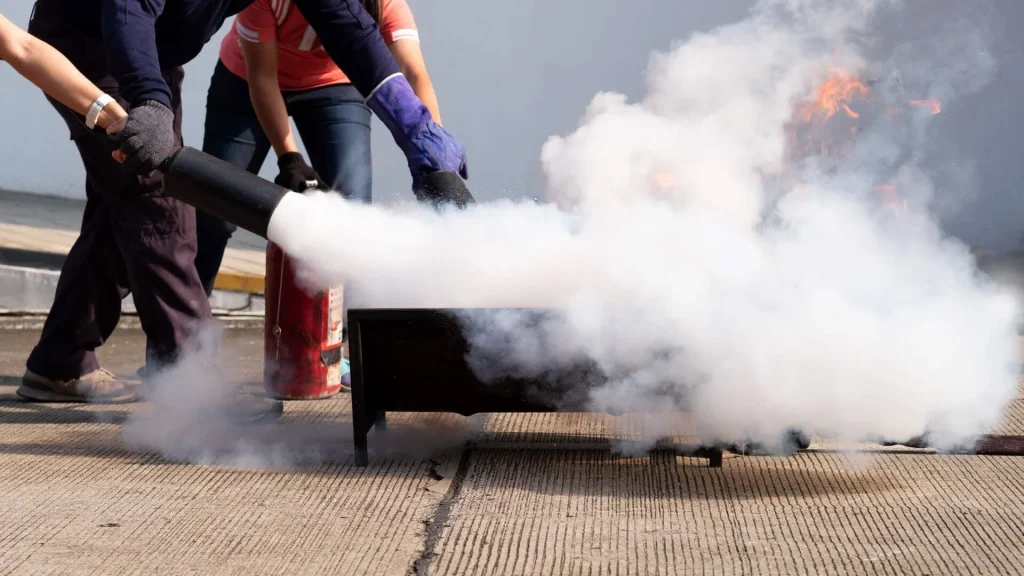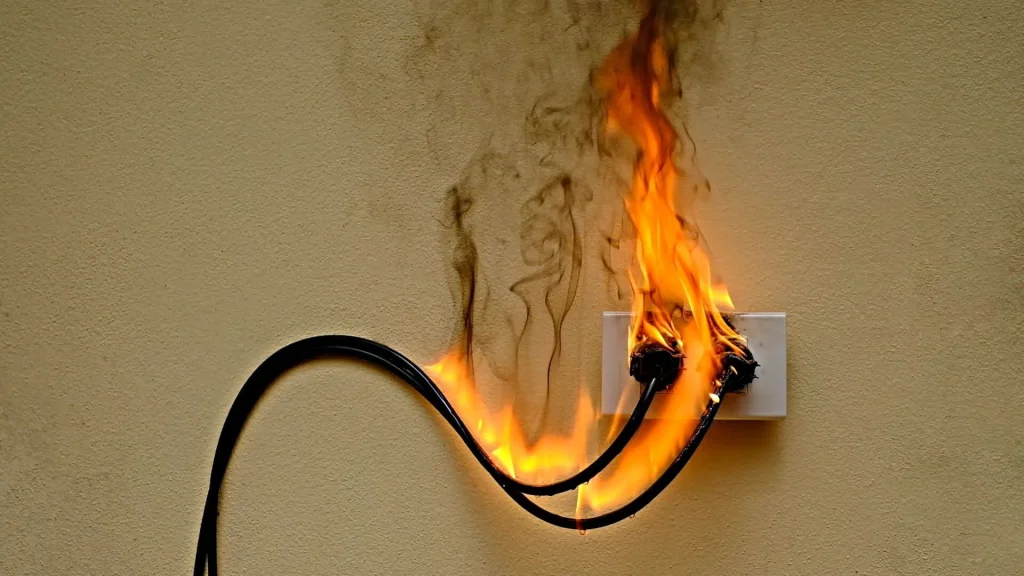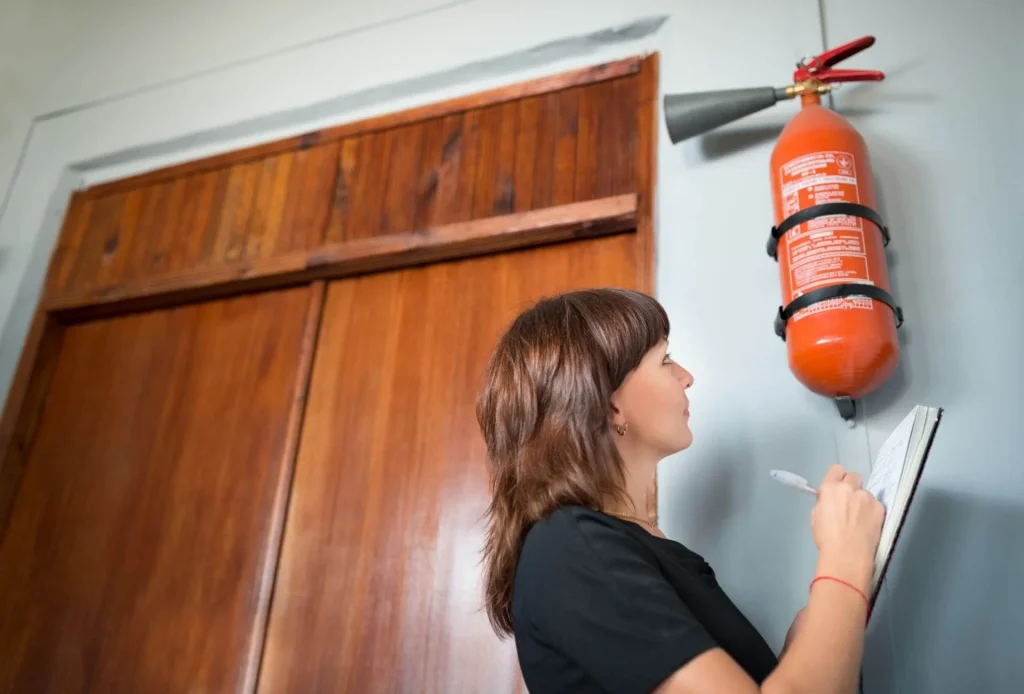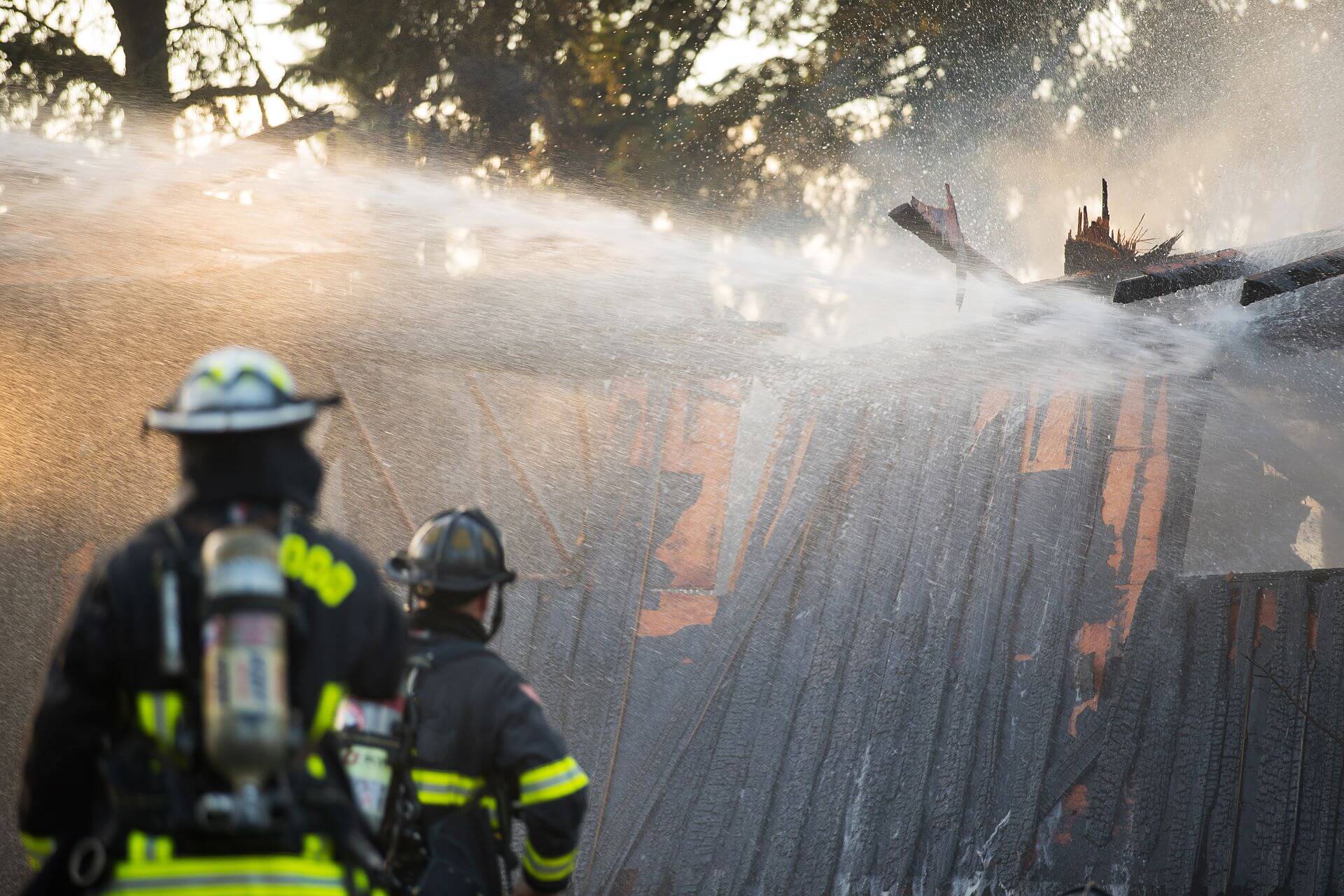Most household fires comprise the statistics for fire-related civilian deaths. Therefore, this blog will show you useful ways for extinguishing fire, how to extinguish specific types of fires, and how to extinguish a fire using a fire extinguisher. All of this information will surely be useful to know if ever a fire emergency occurs in your Dasmarinas Cavite subdivision.

Methods for Putting Out Fires
1. Starve the fire
When a fire occurs, it is often sustained by a particular source that fuels the fire. Hence, if you are able to locate the fuel source that causes the fire, then taking out the said fuel source may extinguish the fire. This fuel source may come in the form of gas or liquid.
Furthermore, a fire can be put out by letting it consume all of its available fuel. In any case, you can starve a fire by removing any potential fuel sources that are near the fire and its path. Examples of potential fuel sources are vehicles, tires, and fabrics.
2. Smother the fire
In order to smother a fire, the goal is to find a way that prevents fresh air or oxygen from fueling the fire, specifically the area where the fire started, to keep burning. Examples of this method include the use of a fire blanket to put out fires on a person or a cooking pan. You may consider using a towel that is damp with water if you do not have a fire blanket, although it is recommended you use a fire blanket instead.
You can also prevent oxygen from further fueling the fire by introducing noble gases, a specific kind of gas, close to the fire. The main idea behind smothering a fire is to ensure that the oxygen content in a confined area is reduced to insufficient amounts.
3. Cool the fire
Cooling is a fire extinguishing method that aims to accelerate the rate at which heat energy from the fire is lost through the use of a cooling agent. Water is typically the cooling agent in this case, for the reason that it has a high latent heat of vaporization and a high thermal capacity. This means that water possesses characteristics that make it a good cooling agent.
It is important to note, however, that there are certain cases where using water to put out a fire is potentially dangerous; and this will be discussed in a later part of this blog.
When putting out a fire through cooling, a sustained flow of large quantities of a cooling agent will take away a fire’s capacity to produce the needed vapor to keep burning.

Different Fires Require Different Ways of Extinguishing
1. Electrical fires
An electrical fire is caused by appliances, fixtures, or electrical equipment that require electricity in order to be used. This kind of fire is typically caused by a fault in the fixture or hardware, such as frayed electrical cords and overloaded circuits.
Never use water to put out an electrical fire because doing so will electrocute you. This means that cooling the fire is not a viable option. Instead, you starve the fire, which in other words means that you have to remove the fuel source.
Aim to unplug the appliance or device that is causing the electrical fire. Locate your house’s breaker box and shut off the power so that the supply of electricity to your home is stopped. Immediately proceed to shut down the breaker box if it is unsafe to unplug the device that is causing the electrical fire.
2. Cooking fires
Given how often people use the kitchen to cook meals, misuse of kitchen equipment that uses fire is a risk of causing a house fire. Therefore, it is important to know how to properly use kitchen equipment.
Although in the event that a cooking fire occurs, there are vital facts to remember. First, cooking fires typically involve cooking oil grease or oil, which are flammable liquids. Hence, never use water to put out a cooking fire because the heat will cause the water to turn into steam and make the oil or grease explode.
A cooking fire involving grease is called a grease fire, therefore cooling the fire is not feasible since it will make the fire worse. Instead, you must smother the fire. If the fire is not that big, you can cover the fire with a cookie sheet or cooking lid until the fire is extinguished. Otherwise, proceed with using a fire blanket to smother the flame.
You may also pour large quantities of only baking soda or salt on the fire to smother it. Do not use flour on grease fires.
3. Chemical fires
Chemical fires are fires that are caused by chemicals, and there are a lot of household chemicals that can cause this type of fire. Examples of these household chemicals include nail polish, hand sanitizers, alcoholic drinks, and rubbing alcohol.
In order to put out chemical fires, do not use water to cool the fire. Proceed to smother the fire with a fire blanket, which is a fire-resistant material that will not aggravate the flammable chemicals. You may also consider pouring large quantities of sand or baking soda on the fire.
4. Ordinary fires
Ordinary fires are the only type of fire where cooling it with water is feasible. Materials that cause ordinary fires are plastic, paper, trash, wood, and clothing. Make sure that you use large quantities of water so that the heat energy being produced by the fire is decreased at a fast rate. If the ordinary fire is coming from a fireplace, you may consider using baking soda instead of water to avoid spreading ashes in the room.
Why Fire Extinguishers Are Important
A fire extinguisher is a tool that was designed for the sole purpose of extinguishing fires. Therefore, it is important and life-saving to have a fire extinguisher that you can use in your house in a Dasmarinas Cavite subdivision.
A fire extinguisher contains chemicals that are able to extinguish fires that burn in environments that provide adequate amounts of fresh air. By using a fire extinguisher to put out such fires, the chemicals found in the liquid sprayed by the fire extinguisher have qualities that absorb the components that are fueling the fire.
Having at least one fire extinguisher should be a necessity in your house, although it is good to consider having several portable fire extinguishers distributed in strategic locations in your house as well.

How Do You Use a Fire Extinguisher?
In order to use fire extinguishers, remember the PASS acronym.
“P is for Pull,” where you pull the pin of the fire extinguisher because it is the pin that prevents any accidental usage of the fire extinguisher. Once the pin is pulled, the fire extinguisher can now spray its extinguishing agent.
“A is for Aim,” where you have to aim the nozzle of the fire extinguisher at the fire at a safe distance. Make sure to locate the source or seat of the fire and aim the nozzle of the fire extinguisher in the area specifically. “
“S is for Squeeze,” where you need to squeeze the handles of the fire extinguisher together in order to spray out the extinguishing agent of the fire extinguisher.
“S is for Sweep,” where you have to do a sweeping motion with the nozzle of the fire extinguisher while you are spraying the fire with the extinguishing agent.
Quick Tips for a House Fire
Always have fire extinguishers ready that are accessible from any room in the house. For small fires, you can apply the starving, smothering, and cooling methods. For slightly bigger small fires, use a fire extinguisher. Invest in fire blankets as well.
Always practice fire safety in any fire emergency in your Dasmarinas Cavite subdivision house. When it comes to large fires, do not attempt to put out all of the flames yourself. Apply proper fire safety, call the fire department, and use fire extinguishers for clearing a path that can get you out of danger.
Read more: Keeping Your Home Safe From a Fire Disaster


